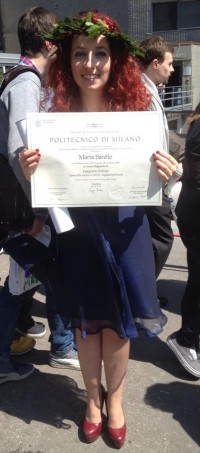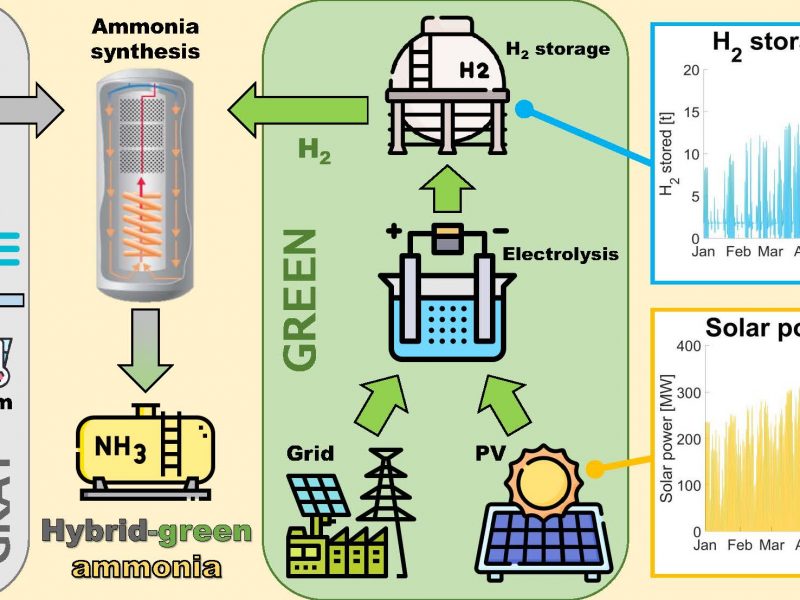 Marta Barello graduated in Chemical Engineering on last April 29th, 2014.
Marta Barello graduated in Chemical Engineering on last April 29th, 2014.
She received the Master degree in Chemical Engineering at Politecnico di Milano with a thesis titled “REVERSE OSMOSIS DESALINATION PROCESS: WATER PERMEABILITY CONSTANT ASSESSMENT” developed at PSE-Lab under the supervision of prof. Davide Manca.
The research thesis was jointly developed with the Chemical Engineering Laboratory at the University of Bradford, UK, under the supervision of prof. Iqbal Mujtaba.
During the research activity Marta coauthored three papers:
- M. Barello, D. Manca, R. Patel, I.M. Mujtaba, Study of a Batch Reverse Osmosis Desalination Laboratory Plant, European Symposium on Computer Aided Process Engineering, Budapest, 2014;
- M. Barello, D. Manca, R. Patel, I.M. Mujtaba, Neural Network Based Correlation for Estimating Water Permeability Constant in RO Desalination Process Under Fouling, 2014, Accepted & In press, Desalination;
- M. Barello, D. Manca, R. Patel, I.M. Mujtaba, Modeling and Analysis of a Batch Reverse Osmosis Desalination Plant, 2014, submitted, Computers & Chemical Engineering.
Thesis keywords: Reverse Osmosis; Batch system; Pilot plant; Performance assessment; Physical property models; Fouling; Water permeability evaluation; Artificial Neural networks modeling.
Abstract
After an introduction about the desalination process, its methodologies and configuration, this work assesses the performance of a reverse osmosis desalination process. The experiments are conducted in a batch system, where the recirculation of the brine in the feed tank is considered. The performance is evaluated in terms of permeate quantity and salinity as a function of other operating parameters such as pressure and feed salinity. The concentration polarization mechanism and the salt transport phenomenon across the membrane are also studied. Special attention is paid to the water permeability constant, which is an important parameter that affects the permeate flux. One of the most important observations in this section is a strong salinity dependence on the water permeability constant, which was always neglected or ignored in the literature from authors that studied this aspect of the process considering only the water permeability decay with the time due to the fouling phenomena. In addition, a system of differential-algebraic equations is proposed to model the batch reverse osmosis system. If feed salinity dependencies for water and salt permeability constants are introduced in the model, the simulation results better match the experimental results, proving that in modeling the desalination process, such dependence should be considered. In order to better quantify the batch performance, further experiments were conducted with a constant feed salinity (to reproduce the operating condition of continuous systems) and the results were compared with the batch system. The water permeability constant, (Kw) is one of many important parameters that affect optimal design and operation of RO processes; it should therefore be evaluated in an appropriate way. For a given membrane type, Kw gradually decreases with increasing the operating pressure, feed salinity and fouling (due to buildup of salt). This decay results in less flux through the membrane and should be taken into account when designing a RO desalination plant. There are only two available literature correlations calculating the dynamic Kw values. However, each of them are only applicable for a given membrane type and given feed salinity over a certain operating pressure range. In this work, using the data generated by these two existing correlations, we develop a time dependent artificial neural network (ANN) based correlation to predict Kw in RO desalination processes under fouling conditions. It is found that the ANN based correlation can predict the Kw values very closely to those obtained by the existing correlations for the same membrane type, operating pressure range and feed salinity. However, the novel feature of this correlation is that it is able to predict Kw values for any of the two membrane types, for any operating pressure and any feed salinity within a wide range. In addition, for the first time the effect of feed salinity on Kw values at low pressure operation is reported. While developing the correlation, a number of different neural network architectures in terms of number of hidden layers and number of neurons in each layer are simulated, and the influence of the transfer functions is eventually investigated. ANN based correlations can be updated reliably in terms of new sets of weights and biases for the same architecture or for a new architecture, with new plant data.
This is the link to download the thesis.


